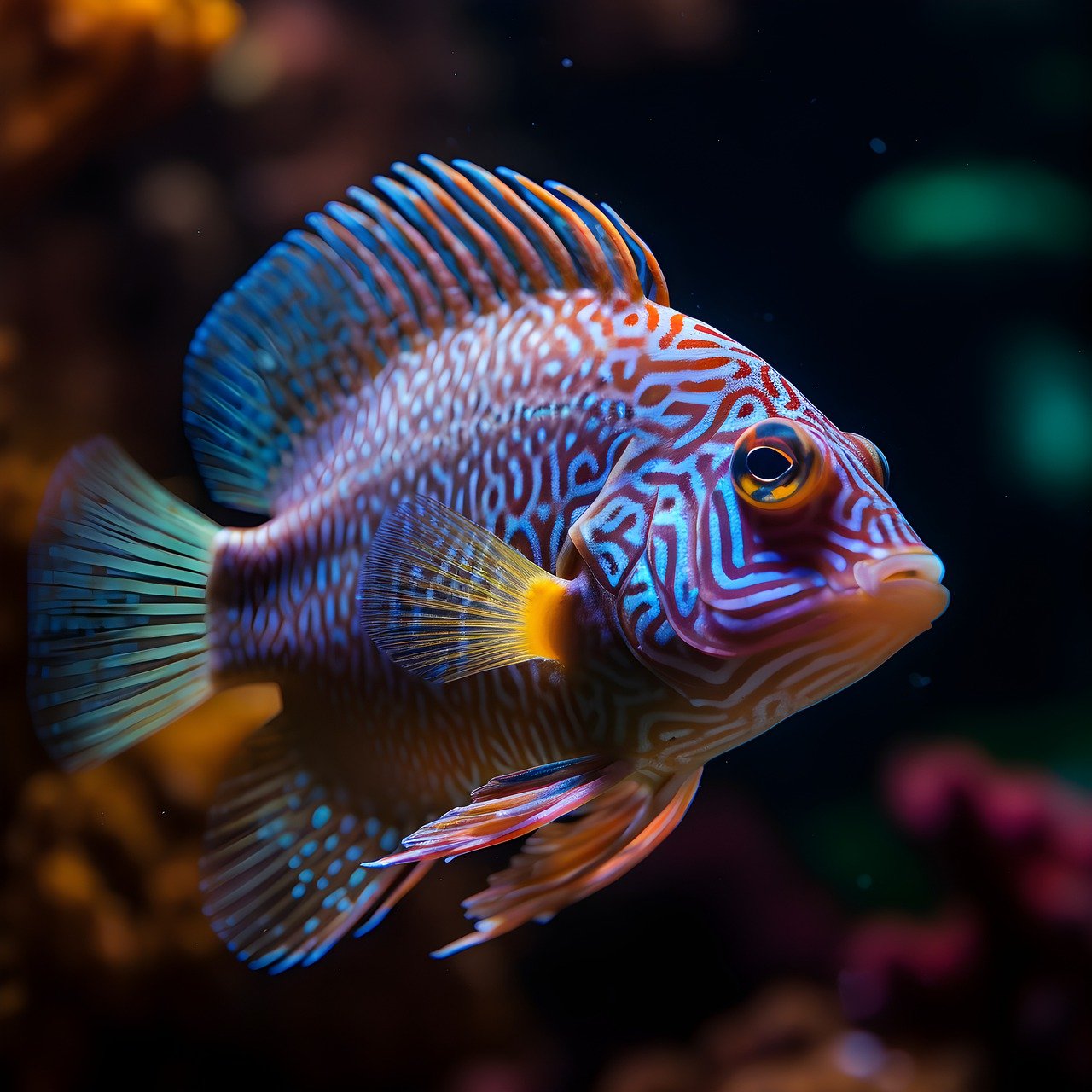Table of Contents
![]()
Caring for a high-maintenance aquarium can be both a rewarding and demanding endeavor. Unlike more straightforward setups, high-maintenance aquariums—such as reef tanks, freshwater planted tanks, and exotic species habitats—require meticulous attention to detail and ongoing management to ensure the health and longevity of the aquatic ecosystem. This guide provides a comprehensive overview of how to manage a high-maintenance aquarium, covering everything from initial setup to long-term care.
Understanding the Basics
Components of a High-Maintenance Aquarium
A high-maintenance aquarium typically includes a range of specialized components designed to create and sustain a complex ecosystem:
- Aquarium Size and Shape: The size and shape of the tank can impact the stability of the environment. Larger tanks generally offer more stability but require more space and equipment.
- Filtration Systems: High-maintenance aquariums often require advanced filtration systems to handle the biological load and maintain water quality. This includes mechanical, chemical, and biological filtration.
- Heating and Cooling Systems: Maintaining a stable temperature is crucial. Many high-maintenance aquariums, especially reef tanks, need precise temperature control.
- Lighting: Lighting is essential for plant growth and simulating natural conditions. This can range from basic LED systems to advanced metal halide or T5 fluorescent lights, depending on the needs of the tank’s inhabitants.
- Substrate and Decorations: The choice of substrate (sand, gravel, or specialized media) and decorations (coral, rocks, or artificial structures) affects both aesthetic appeal and functionality, influencing factors like water flow and hiding spots.
Types of High-Maintenance Aquariums
- Reef Tanks: These simulate natural coral reef environments, requiring stable water conditions, specialized lighting, and live rock.
- Freshwater Planted Tanks: These focus on aquatic plant growth, requiring balanced nutrients, CO2 injection, and appropriate lighting.
- Biotope Tanks: These replicate specific natural environments, often demanding precise water chemistry and compatible species.
- Exotic Species Setups: These may house rare or delicate species that need specific care and conditions.
Setup and Planning
Initial Setup
- Selecting the Right Tank and Equipment: Choose a tank size and shape that suits your space and the type of aquarium you plan to maintain. Invest in high-quality equipment to ensure long-term success.
- Installing the Filtration System: Properly set up your filtration system according to the needs of your aquarium. This may involve installing external filters, protein skimmers, or other specialized equipment.
- Adding Substrate and Decorations: Add substrate to the tank, followed by decorations. Ensure that these elements are thoroughly cleaned before adding them to avoid contamination.
- Cycling the Aquarium: Before introducing any fish or plants, cycle the aquarium to establish beneficial bacteria that will help process waste. This process can take several weeks and involves monitoring ammonia, nitrite, and nitrate levels.
Choosing Livestock
- Compatibility Considerations: Select fish, plants, and other inhabitants that are compatible with each other and with the conditions of your aquarium.
- Sourcing Healthy Specimens: Obtain livestock from reputable sources to ensure they are healthy and free from diseases.
- Planning for Growth and Behavior: Consider the adult size and behavior of species to ensure they have enough space and are suitable for your setup.
Daily Maintenance
Monitoring Water Quality
- Testing for pH, Ammonia, Nitrite, Nitrate: Regularly test water parameters to ensure they are within acceptable ranges. This helps prevent problems before they arise.
- Adjusting Chemical Levels: Based on test results, adjust chemical levels as needed using appropriate products.
Feeding and Nutrition
- Types of Food and Feeding Schedules: Provide a varied diet tailored to the needs of your aquarium’s inhabitants. Follow recommended feeding schedules to avoid overfeeding.
- Preventing Overfeeding: Monitor food intake and adjust quantities to prevent excess waste and nutrient imbalances.
Observing Fish and Plants
- Monitoring for Signs of Stress or Disease: Watch for behavioral changes or physical symptoms that may indicate health issues.
- Assessing Plant Health and Growth: Ensure that plants are growing well and not suffering from nutrient deficiencies or algae problems.
Weekly Maintenance
Cleaning Procedures
- Removing Algae and Debris: Clean the tank’s interior surfaces and remove any algae growth or debris from the substrate.
- Cleaning Filters and Equipment: Rinse or replace filter media and check other equipment for cleanliness and proper function.
Water Changes
- Frequency and Volume: Perform partial water changes regularly to maintain water quality. Typically, 10-20% of the water should be replaced each week.
- Proper Techniques for Water Changes: Use dechlorinated water and ensure that the temperature and parameters of the new water match those of the tank.
Equipment Checks
- Ensuring Proper Operation: Verify that all equipment, including filters, heaters, and lights, is functioning correctly.
- Calibrating and Replacing Parts: Regularly calibrate equipment and replace any worn or damaged parts to prevent malfunctions.
Monthly Maintenance
Deep Cleaning
- Thorough Cleaning of Substrate and Decorations: Conduct a more extensive cleaning of the substrate and decorations, taking care not to disturb beneficial bacteria.
- Inspecting and Cleaning Plumbing and Equipment: Check for clogs or buildup in plumbing and other equipment components.
System Updates
- Reviewing and Adjusting Filtration and Heating Systems: Assess whether the filtration and heating systems are adequate for the current needs of the aquarium and upgrade if necessary.
- Updating or Replacing Parts: Replace any outdated or malfunctioning parts to ensure optimal performance.
Problem Solving
Common Issues
- Algae Blooms: Excessive algae can indicate nutrient imbalances or inadequate lighting. Address the root cause and use algae control methods as needed.
- Disease Outbreaks: Identify symptoms and apply appropriate treatments. Quarantine affected animals to prevent the spread of disease.
- Equipment Malfunctions: Regularly inspect and maintain equipment to avoid failures. Keep spare parts on hand for quick repairs.
Prevention and Treatment
- Identifying and Diagnosing Problems: Accurately diagnose issues through observation and testing.
- Effective Treatment Methods: Use proven treatments and follow recommended dosages and procedures.
- Preventive Measures: Implement strategies to prevent future problems, such as maintaining good water quality and avoiding overstocking.
Special Considerations
Seasonal Changes
- Adapting to Temperature Fluctuations: Adjust heating and cooling systems to accommodate seasonal temperature changes.
- Adjusting Lighting Schedules: Modify lighting schedules to reflect seasonal variations in natural light.
Vacation Planning
- Arranging for Care in Your Absence: Make arrangements for someone to care for your aquarium while you are away, or use automated systems.
- Automated Systems and Backup Plans: Invest in automated feeders and other systems to manage daily tasks during your absence, and have a backup plan in case of emergencies.
Long-Term Care and Upgrades
Monitoring and Adjusting for Growth
- Accommodating Larger Fish or Plants: Plan for growth by upgrading tank size or equipment as needed.
- Upgrading Equipment: Regularly assess and upgrade equipment to keep up with technological advancements and changing needs.
Continuous Learning
- Staying Updated with New Technologies and Techniques: Keep abreast of new developments in aquarium care through research and community involvement.
- Joining Aquarium Communities and Forums: Engage with other aquarium enthusiasts to share knowledge and gain support.
Conclusion
Caring for a high-maintenance aquarium involves a significant commitment of time and resources but offers the rewards of a thriving, beautiful aquatic environment. By following a structured maintenance routine and staying informed about best practices, you can ensure the health and longevity of your aquarium, creating a stunning and enjoyable display for years to come.
Share This





Be the first to comment